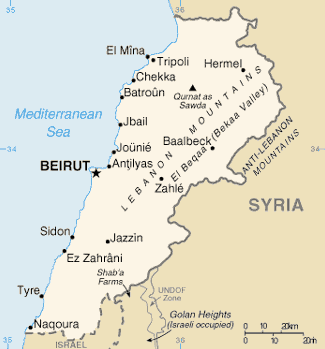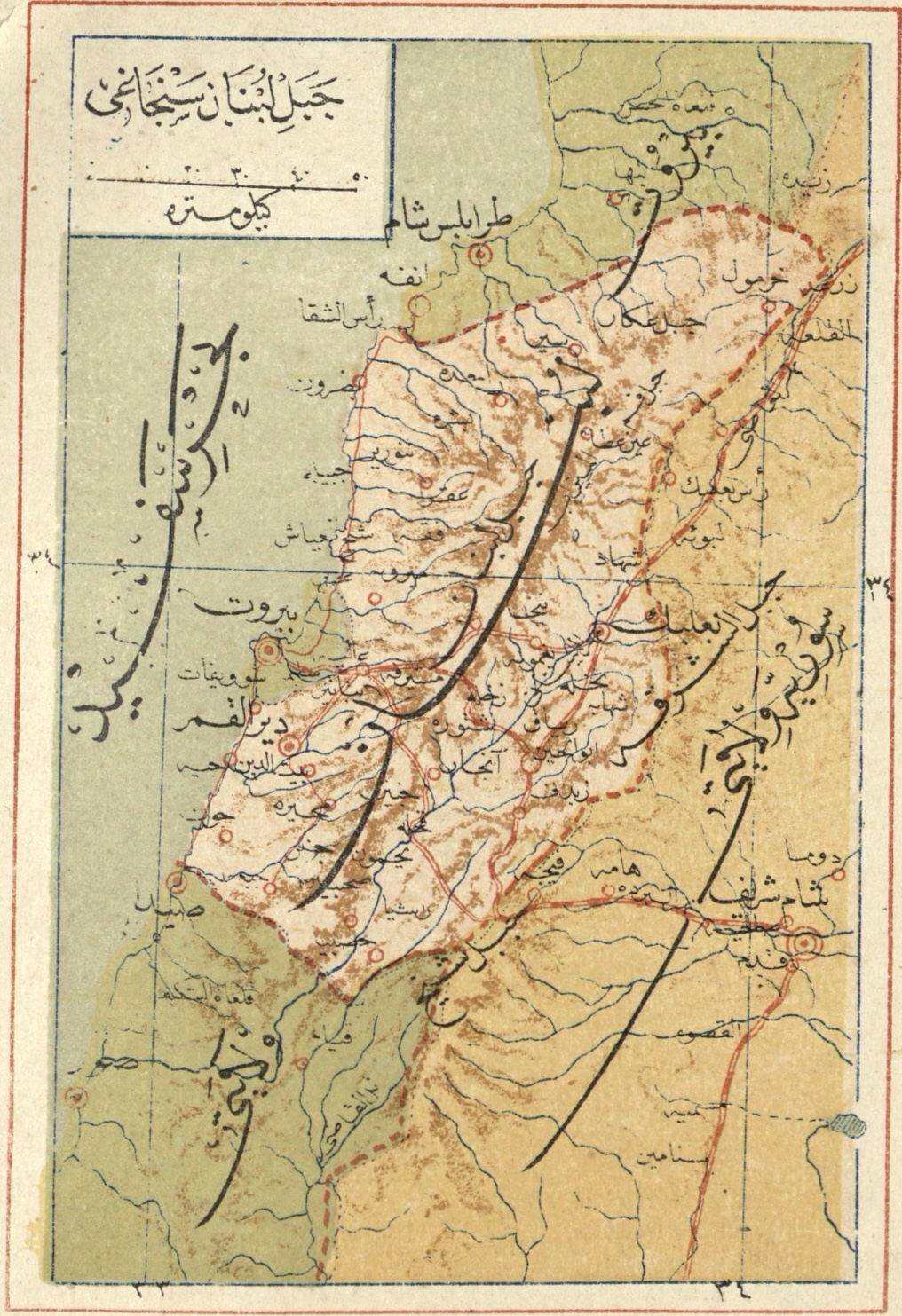|
Culture Of Lebanon
The culture of Lebanon and the Lebanese people emerged from Phoenicia and through various civilizations over thousands of years. It was home to the Phoenicians and was subsequently conquered and occupied by the Assyrians, the Greeks, the Romans, the Persians, the Arabs, the Crusaders, the Ottomans and the French. This variety is reflected in Lebanon's diverse population, composed of different religious groups, and features in the country's festivals, literature, artifacts, cuisine and architecture of Lebanon. The Maronites and the Druzes founded modern Lebanon in the early eighteenth century, through the ruling and social system known as the "Maronite-Druze dualism" in Mount Lebanon Mutasarrifite. Despite the religious and denominational diversity of the Lebanese, they "share an almost common culture".Stokes, Jamie. ''Encyclopedia of the Peoples of Africa and the Middle East'', page 406 Article 11 of the Constitution of Lebanon states: "Arabic is the official nati ... [...More Info...] [...Related Items...] OR: [Wikipedia] [Google] [Baidu] |
Cuisine Of Lebanon
Lebanese cuisine is the culinary traditions and practices originating from Lebanon. It includes an abundance of whole grains, fruits, vegetables, fresh fish and seafood. Poultry is eaten more often than red meat, and when red meat is eaten, it is usually lamb and goat meat. Dishes include copious amounts of garlic and olive oil, and dishes are often seasoned with salt and lemon juice. Chickpeas and parsley are also staples of the Lebanese diet. Well-known dishes include '' baba ghanouj'', ''tabbouleh'', '' sfeeha'', ''falafel'' and ''shawarma''. An important component of many Lebanese meals is ''hummus'', a chickpea puree dish, and many dishes are eaten with flatbread. A plate of veggies with tomatoes, cucumber, mint, olives and pickles is always served on table, and a plate of fruits at the end of the meal with a Lebanese coffee. Well-known desserts include '' baklawa'', ''sfouf'' and ''ka'ak''. Some desserts are specifically prepared on special occasions; for example, ''meghl ... [...More Info...] [...Related Items...] OR: [Wikipedia] [Google] [Baidu] |
Beirut
Beirut ( ; ) is the Capital city, capital and largest city of Lebanon. , Greater Beirut has a population of 2.5 million, just under half of Lebanon's population, which makes it the List of largest cities in the Levant region by population, fourth-largest city in the Levant region and the List of largest cities in the Arab world, sixteenth-largest in the Arab world. The city is situated on a peninsula at the midpoint of Lebanon's Mediterranean Sea, Mediterranean coast. Beirut has been inhabited for more than 5,000 years, making it one of the List of oldest continuously inhabited cities, oldest cities in the world. Beirut is Lebanon's seat of government and plays a central role in the Economy of Lebanon, Lebanese economy, with many banks and corporations based in the city. Beirut is an important Port of Beirut, seaport for the country and region, and rated a Global City, Beta- World City by the Globalization and World Cities Research Network. Beirut was severely damaged by ... [...More Info...] [...Related Items...] OR: [Wikipedia] [Google] [Baidu] |
Archaeology Of Lebanon
Archaeology of Lebanon includes thousands of years of history ranging from Lower Palaeolithic, Phoenician, Ancient Rome, Roman, Arabs, Arab, Ottoman Empire, Ottoman, and Crusades periods. Notable findings and sites Lebanon features several important Paleolithic sites associated with Neanderthals. These include Adloun, Chekka Jdidé, El-Masloukh, Ksar Akil, Nahr Ibrahim and Naame.Kipfer, 2000, pp. 623, 632, 637, 647, 655. Byblos is a well-known archaeological site, a Phoenician seaport, where the tomb of Ahiram and the other Byblian royal inscriptions were found. An ancient Phoenician inscription on the tomb dates to between the 13th and 10th centuries BCE.Wedgeworth, 1993, p. 453. Byblos, as well as archaeological sites in Baalbek, Tyre, Lebanon, Tyre, Sidon, and Tripoli, Lebanon, Tripoli, contain artifacts indicating the presence of libraries dating back to the period of Classical antiquity. Industry names Lower Paleolithic industries of Lebanon have shown similarities to ... [...More Info...] [...Related Items...] OR: [Wikipedia] [Google] [Baidu] |
History Of Lebanon
The history of Lebanon covers the history of the modern Republic of Lebanon and the earlier emergence of Greater Lebanon under the French Mandate for Syria and the Lebanon, as well as the previous history of the region, covered by the modern state. The modern State of Lebanon has existed within its current borders since 1920, when Greater Lebanon was created under French and British mandate, resulting from the dismemberment of the Ottoman Empire at the end of World War I. Before this date, the designation "Lebanon" concerned a territory with vaguely defined borders, encompassing the mountain range of Mount Lebanon and its outskirts (mainly the Mediterranean coast and the plains of Bekaa and Akkar). The idea of an independent Lebanon, however, emerged during the end of the Mount Lebanon Emirate where Maronite clerics vowed for an independent nation. Prehistory Ksar Akil, northeast of Beirut, is a large rock shelter below a steep limestone cliff where excavations have shown ... [...More Info...] [...Related Items...] OR: [Wikipedia] [Google] [Baidu] |
Geography Of Lebanon
Lebanon is a small country in the Levant region of the Eastern Mediterranean, located at approximately 34˚N, 35˚E. It stretches along the eastern shore of the Mediterranean Sea and its length is almost three times its width. From north to south, the width of its terrain becomes narrower. Lebanon's mountainous terrain, proximity to the sea, and strategic location at a crossroads of the world were decisive factors in shaping its history. The country's role in the region, as indeed in the world at large, was shaped by trade. It serves as a link between the Mediterranean world and India and East Asia. The merchants of the region exported oil, grain, textiles, metal work, and pottery through the port cities to Western markets. Physical geography and regions The area of Lebanon is . The country is roughly rectangular in shape, becoming narrower toward the south and the farthest north. Its widest point is , and its narrowest is ; the average width is about . Because Lebanon straddl ... [...More Info...] [...Related Items...] OR: [Wikipedia] [Google] [Baidu] |
Lebanese Arabic
Lebanese Arabic ( ; autonym: ), or simply Lebanese ( ; autonym: ), is a Varieties of Arabic, variety of Levantine Arabic, indigenous to and primarily Languages of Lebanon, spoken in Lebanon, with significant linguistic influences borrowed from other Middle Eastern and European languages. Due to multilingualism and pervasive diglossia among Lebanese people (a majority of the Lebanese people are bilingual or trilingual), it is not uncommon for Lebanese people to code-switch between or mix Lebanese Arabic, French language, French, and English language, English in their daily speech. It is also spoken among the Lebanese diaspora. Lebanese Arabic is a descendant of the Old Arabic, Arabic dialects introduced to the Levant and other Arabic dialects that were already spoken in other parts of the Levant in the 7th century AD, which gradually supplanted various indigenous Northwest Semitic languages to become the regional lingua franca. As a result of this prolonged process of language s ... [...More Info...] [...Related Items...] OR: [Wikipedia] [Google] [Baidu] |
French Language
French ( or ) is a Romance languages, Romance language of the Indo-European languages, Indo-European family. Like all other Romance languages, it descended from the Vulgar Latin of the Roman Empire. French evolved from Northern Old Gallo-Romance, a descendant of the Latin spoken in Northern Gaul. Its closest relatives are the other langues d'oïl—languages historically spoken in northern France and in southern Belgium, which French (Francien language, Francien) largely supplanted. It was also substratum (linguistics), influenced by native Celtic languages of Northern Roman Gaul and by the Germanic languages, Germanic Frankish language of the post-Roman Franks, Frankish invaders. As a result of French and Belgian colonialism from the 16th century onward, it was introduced to new territories in the Americas, Africa, and Asia, and numerous French-based creole languages, most notably Haitian Creole, were established. A French-speaking person or nation may be referred to as Fra ... [...More Info...] [...Related Items...] OR: [Wikipedia] [Google] [Baidu] |
Arabic Language
Arabic (, , or , ) is a Central Semitic languages, Central Semitic language of the Afroasiatic languages, Afroasiatic language family spoken primarily in the Arab world. The International Organization for Standardization (ISO) assigns language codes to 32 varieties of Arabic, including its standard form of Literary Arabic, known as Modern Standard Arabic, which is derived from Classical Arabic. This distinction exists primarily among Western linguists; Arabic speakers themselves generally do not distinguish between Modern Standard Arabic and Classical Arabic, but rather refer to both as ( "the eloquent Arabic") or simply ' (). Arabic is the List of languages by the number of countries in which they are recognized as an official language, third most widespread official language after English and French, one of six official languages of the United Nations, and the Sacred language, liturgical language of Islam. Arabic is widely taught in schools and universities around the wo ... [...More Info...] [...Related Items...] OR: [Wikipedia] [Google] [Baidu] |
Constitution Of Lebanon
The Constitution of Lebanon was adopted on 23 May 1926. Initiated during the French Mandate, it established a governance model based on confessionalism to accommodate Lebanon's religious communities. Drafted with contributions from prominent figures and drawing inspiration from the French Third Republic, the constitution enshrined principles of liberty, equality, and religious freedom while instituting a system that allocated political representation and power based on religious affiliation. This included an equal division of legislative seats between Christians and Muslims, with further proportional distribution among their sects. Post-independence, the constitution underwent significant modifications, highlighted by changes including the 1943 National Pact and further refined by the 1989 Taif Agreement, with the latter aimed at resolving the 15-year Lebanese Civil War. Background Prior to its collapse at the end of the First World War, the area that is now Lebanon was pa ... [...More Info...] [...Related Items...] OR: [Wikipedia] [Google] [Baidu] |
Mount Lebanon Mutasarrifate
The Mount Lebanon Mutasarrifate (1861–1918, ; ) was one of the Ottoman Empire's subdivisions following the 19th-century Tanzimat reform. After 1861, there existed an autonomous Mount Lebanon with a Christian Mutasarrif (governor), which had been created as a homeland for the Maronites under European diplomatic pressure following the 1860 Druze–Maronite conflict. The Maronite Catholics and the Druze founded modern Lebanon in the early eighteenth century, through the ruling and social system known as the "Maronite-Druze dualism" in Mount Lebanon. This system came during the era of Tanzimat reforms initiated by Sultan Abdulmejid I in an attempt to extricate the Ottoman State from its internal problems, and it was approved after the major sectarian strife of 1860 and the numerous massacres that occurred in Mount Lebanon, Damascus, the Beqaa Valley and Jabal Amil among Muslims and Christians in general, and the Druze and Maronites in particular; the European countries exploited th ... [...More Info...] [...Related Items...] OR: [Wikipedia] [Google] [Baidu] |
Lebanon
Lebanon, officially the Republic of Lebanon, is a country in the Levant region of West Asia. Situated at the crossroads of the Mediterranean Basin and the Arabian Peninsula, it is bordered by Syria to the north and east, Israel to the south, and the Mediterranean Sea to the west; Cyprus lies a short distance from the coastline. Lebanon has a population of more than five million and an area of . Beirut is the country's capital and largest city. Human habitation in Lebanon dates to 5000 BC. From 3200 to 539 BC, it was part of Phoenicia, a maritime civilization that spanned the Mediterranean Basin. In 64 BC, the region became part of the Roman Empire and the subsequent Byzantine Empire. After the seventh century, it Muslim conquest of the Levant, came under the rule of different Islamic caliphates, including the Rashidun Caliphate, Rashidun, Umayyad Caliphate, Umayyad and Abbasid Caliphate, Abbasid. The 11th century saw the establishment of Christian Crusader states, which fell ... [...More Info...] [...Related Items...] OR: [Wikipedia] [Google] [Baidu] |







